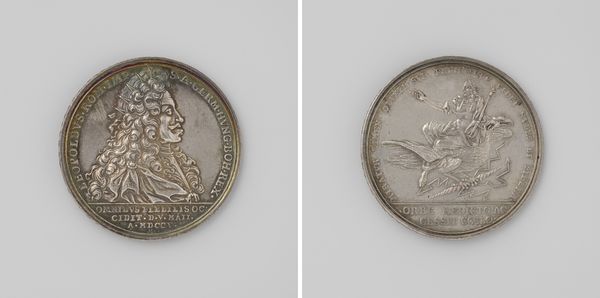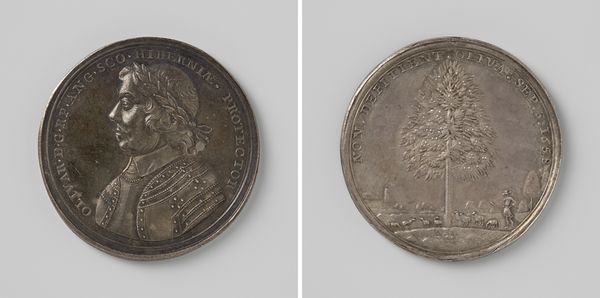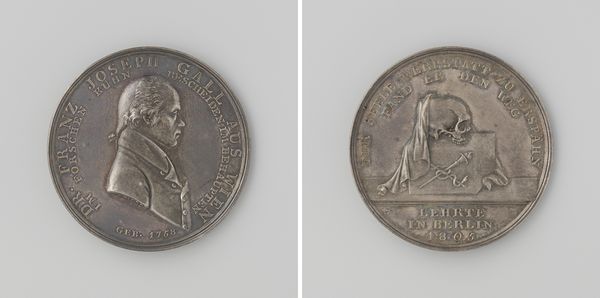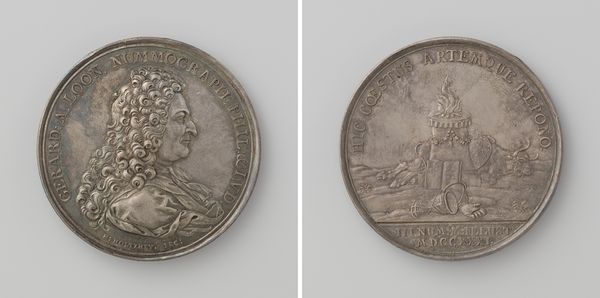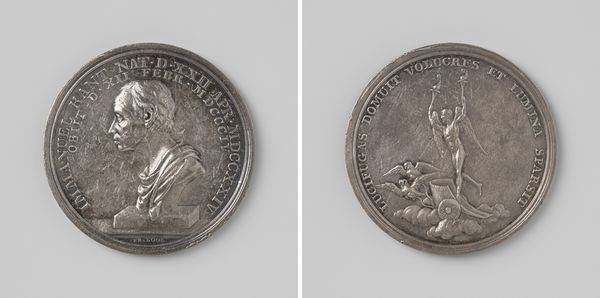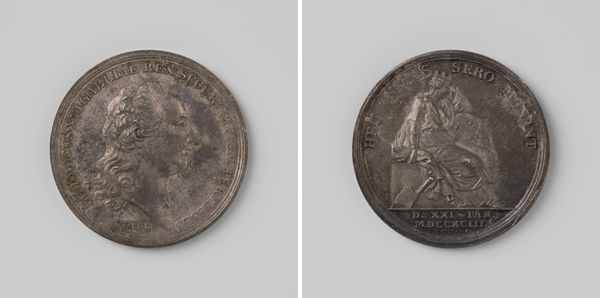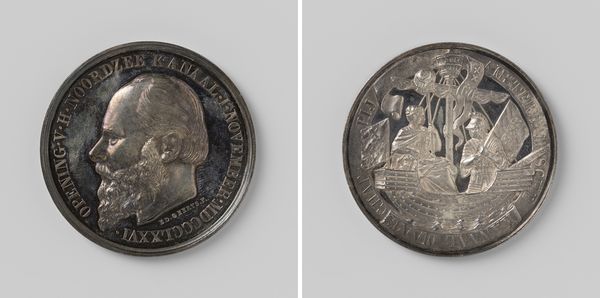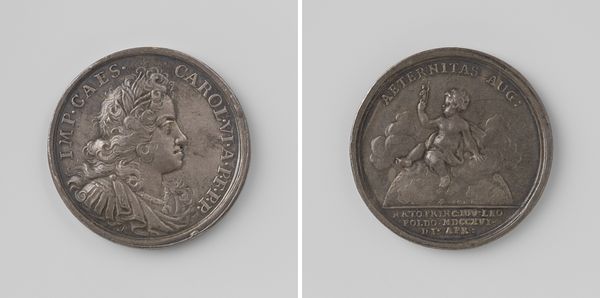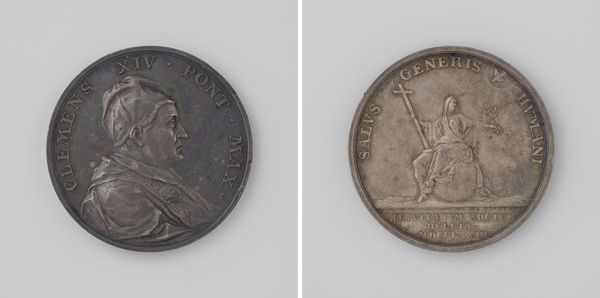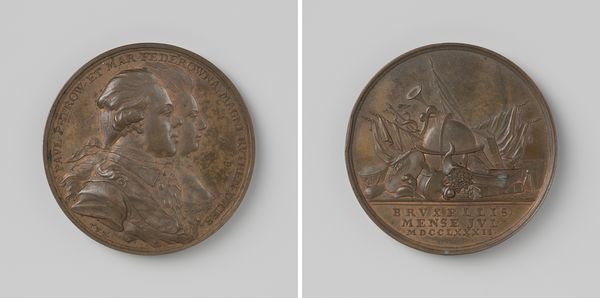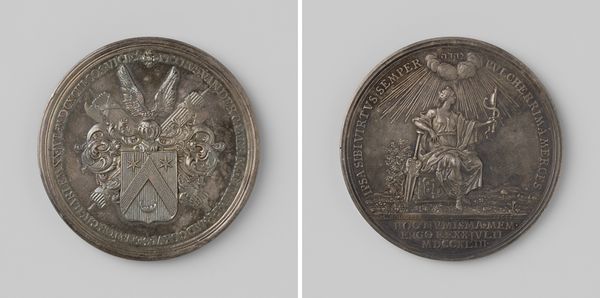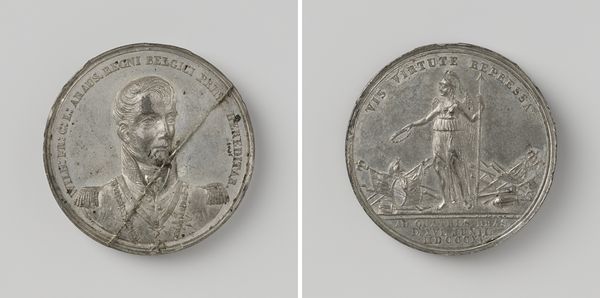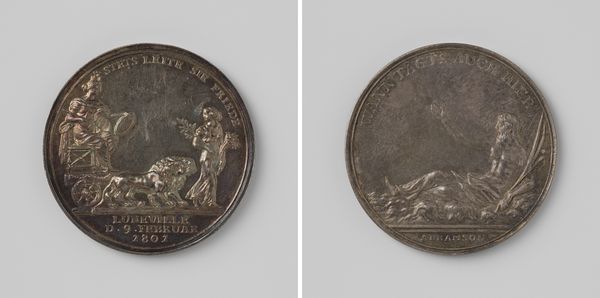
Verdrag van Kalisch en Breslau, ter ere van Alexander I, tsaar van Rusland en Frederik Willem III, koning van Pruisen 1813
0:00
0:00
metal, relief, sculpture, engraving
#
portrait
#
neoclacissism
#
metal
#
sculpture
#
relief
#
sculpture
#
history-painting
#
engraving
Dimensions: diameter 4.4 cm, weight 27.19 gr
Copyright: Rijks Museum: Open Domain
Editor: Here we have a metal engraving from 1813 by Daniel Friedrich Loos. It’s titled "Verdrag van Kalisch en Breslau, ter ere van Alexander I, tsaar van Rusland en Frederik Willem III, koning van Pruisen," which, as far as I can tell, celebrates a treaty between Russia and Prussia. It strikes me as a piece brimming with political and historical weight. What do you see in this work, particularly in its historical context? Curator: It's fascinating how a seemingly small object like this engraving encapsulates a pivotal moment in European history. The Treaty of Kalisch was a direct response to Napoleon's dominance, wasn't it? The alliance between Russia and Prussia here signifies a united front against French expansionism. Consider the deliberate act of creating this object, it speaks volumes. How do you think its distribution or display at the time influenced public sentiment? Editor: I hadn’t thought of that, the distribution! Given the era, maybe it was accessible for a particular social sphere. Perhaps distributed among officials, army, or something similar? It makes you wonder about the power of visual propaganda even back then. Also, I can tell by looking closely that on the reverse of the relief, some classical allegories can be noted. What can be said about the influence of neoclassicism on this metal work? Curator: Precisely. The visual language here is intentionally Neoclassical. The restrained portraits, the balanced composition, and the use of symbolism like wreaths are all designed to evoke a sense of stability and legitimacy. But the underlying message is about power. Who exactly was the treaty and engraving meant to serve, in the long term? How did it reshape perceptions? What long-lasting effects followed? Editor: I never thought about it like that, as an assertion of power through a carefully crafted public image. Now I'm looking at it thinking it goes deeper than the treaty commemoration. Thank you! Curator: And thank you, your close examination brings attention to crucial consideration around the impact that the cultural object had in solidifying particular geopolitical structures of the time.
Comments
No comments
Be the first to comment and join the conversation on the ultimate creative platform.
